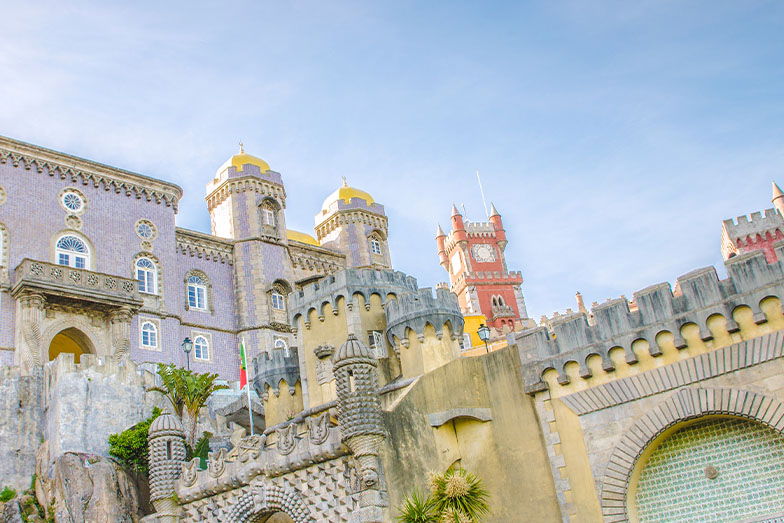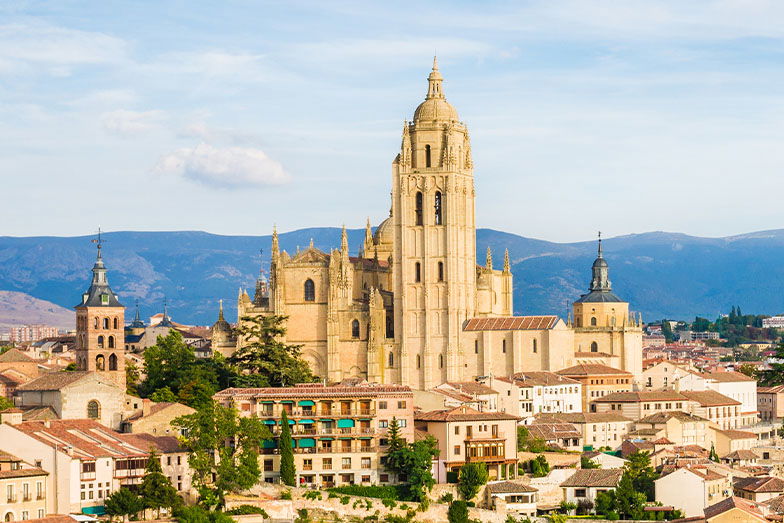Prague Castle, Czechia

Prague, the capital of Czechia, is our starting point, where the magnificent Prague Castle beautifully embodies Prague’s medieval heritage. Overlooking the city from a hill on the Vltava River’s left bank, the historic complex features a cathedral, courtyards and gardens – and, naturally, stunning views of the city.
Leeds Castle, England
An exploration of European castles must include the romantic and fairytale-like Leeds Castle. Considered among the world’s most beautiful castles, Leeds Castle’s first appearance in historical records is in 1086. In ancient times, the stronghold was built on two islands in the River Len and connected via a suspension bridge. It was later used as a royal castle, serving the British monarchy for centuries. Following the establishment of a charitable foundation after 1974, Leeds Castle today is a popular tourist destination that also hosts conferences and weddings.
Buda Castle, Hungary

Buda Castle (also known as Budin Castle) is set about 50 meters above the Danube River in Budapest, Hungary’s capital. Erected in the 13th century to defend against Mongol attacks, the Gothic-style castle served for seven centuries as a residence for the Hungarian royal family. During its long history, the castle was seized by various empires, including the Ottoman; in the Middle Ages, it flourished as the administrative center of the Roman-German Empire. Although Buda Castle was largely destroyed during World War II, it was completely rebuilt during the 1950s and now contains the Hungarian National Gallery, the Budapest History Museum and the Ludwig Museum.
Edinburgh Castle, Scotland
One of the most famous of Europe’s castles, the grand Edinburgh Castle is regarded as a symbol of Scottish history and power. Standing majestically on the Castle Rocks, Edinburgh Castle has survived for nearly a thousand years, serving variously as a prison, an arsenal, a royal residence and an administrative center. A UNESCO World Heritage Site, the castle also provides splendid views of the city. A visit to Edinburgh Castle will generally take around two to three hours.
Bran Castle, Romania

Holding an important place in Romanian history, the intriguing Bran Castle is best known for one of its former residents, Vlad Tepes ruler of Wallachia. Also known as Vlad the Impaler, the king served as the inspiration for Bram Stoker’s Dracula. The castle, home to numerous other historical figures, has been sold several times and undergone numerous restorations; it is now open to the public as a museum.
Chenonceau Castle (Château de Chenonceau), France
Erected in the 13th century, the lovely Chenonceau Castle spans the Cher River, in France’s Loire Region. Originally built as an arched structure, the chateau was designed by Renaissance architect Philibert Delorme and stands as an exemplar of the style. It is also known as the Château des Dames, so named because women have decorated it throughout its history. Chenonceau Castle was added to the UNESCO World Heritage List in 2000 and is now open to the public as a museum.
Pena Palace, Portugal

About an hour’s drive from Lisbon, Pena Palace (National Palace of Pena), stands atop a densely forested hill in Sintra. A unique example of Romanticism-style architecture, Pena Castle was erected in the 19th century as the royal summer residence and is said to be visible even from Lisbon when the weather is clear. The castle, a UNESCO World Heritage Site, features vibrant colors and sculptures as well as magnificent views.
Bojnice Castle, Slovakia
The 12th-century Bojnice Castle (Castle of Spirits) is one of Slovakia’s oldest and most important monuments. Originally made of wood, the castle was rebuilt in stone in the 13th century. It had been owned by various families for many years, but was purchased by Count Ján Pálffy in 1889; inspired by Renaissance architecture, the count personally oversaw the restoration of Bojnice Castle, which took approximately 22 years. Bojnice Castle is now considered one of Europe’s most remarkable castles, featuring wonderful views as well as a museum.
Segovia Castle, Spain

The breathtakingly beautiful Segovia Castle (Alcázar de Segovia), near Segovia, Spain, appears in historical records from the 12th century. Erected as a defensive stronghold and later home to the royal family, Segovia Castle is now a UNESCO World Heritage Site and one of the city’s most important historical museums.
We wish you a pleasant journey full of discoveries!

